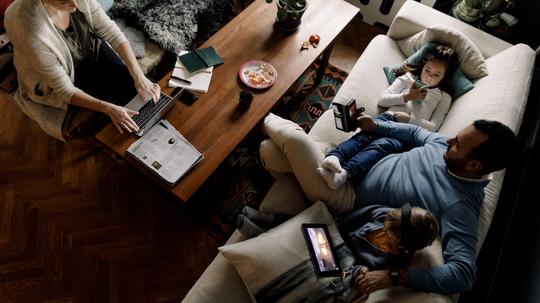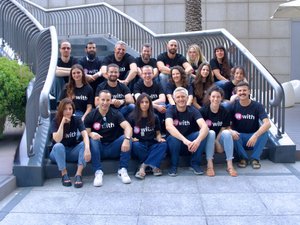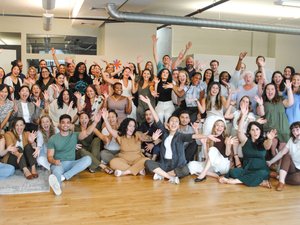
The novel coronavirus has shut down nearly everything.
Gov. Charlie Baker has ordered nonessential businesses to shut their doors and urged Massachusetts residents to stay at home until April 7. That's also the date until which schools are closed statewide. In Boston, the closure lasts even longer, with schools closed until April 27 at the earliest.
For working parents whose office jobs have sent them to work from home, it means they are essentially working doubletime: as a full-time employee, and as childcare provider for their own kids.
For the parents who are trying to home-school their kids, make that tripletime.
"It’s really WFHomeschool, which is really WFHellishlydifficult, which we’re (both working parents, both WFH) just trying to give ourselves a break on the whole 'nailing it' thing because we won’t even come close," Nathaniel Eberle, director of global brand management at LogMeIn, told BostInno in an email.
Eberle has two children, an 8-year-old in second grade and a 5-year-old in pre-K. The solution so far? Coming up with activities that can help both kids develop, scheduled in the same time blocks. As their parents work in shifts, the children learn in shifts, too.
Eberle says his children seem to understand the extraordinary nature of their situation and have so far abided by the schedule.
"The most important thing is finding some type of balance as co-working parents, and I’m finding it’s as elusive as Sasquatch," Eberle said. "It’ll take working off-hours and in shifts to make sure we make it out alive, and that’s without leaving our front door."
Everyone I spoke to for this article agreed that maintaining even a semblance of a regular schedule was the most important thing for maintaining sanity. Joshua Milne, an independent PR professional, said he lets his 10- and 6-year-old children help design a basic schedule each day. That includes school work, free choice and a little TV, he said.
Lucky for Milne, he's not entirely responsible for home-schooling on top of everything else. The Lincoln, Mass. private school that both of Milne's children attend has set up Zoom calls between students and teachers, so they still get in learning and social interaction, even though it's not the equivalent of a full school day.
Milne's 10-year-old daughter meets with her class via Zoom twice a week to discuss readings; she meets with her teachers over the platform as well. Meanwhile, Milne's 6-year-old son has a daily 9 a.m. call where the teacher will spend 30 to 45 minutes imitating the class's normal routine: The teacher asks how everyone is doing and what they did yesterday, then discusses the weather for the day.
Zoom has proven a useful resource for the kids, too, even without their teachers.
"What they've done the last two days is left the Zoom open and let the kids just stay on and talk to their peers," Milne said. "It's a virtual recess. The kids really need some form of social interaction. They can't meet on the playground. They can't meet anywhere. This is a safe way to do it."
Milne and Eberle are both used to working from home themselves. As a solo PR professional, Milne has worked entirely remotely for the past eight years, since his daughter was a baby. And as Eberle pointed out, LogMeIn actually makes remote software, so he and his colleagues have best practices instilled in them already.
"We certainly drink our own champagne, so to speak," he said. "This situation, however, no one has written the guide on."
Val Brooks, a program manager at Junior Achievement of Northern New England, is navigating a different situation entirely: working from home with teenagers.
"For now, I log in to my work email around 6:15 and crank out about four to five hours of work... my girls are teenagers, so they sleep late," Brooks said in an email. "When they are up, we all have a meal together, I'll do two more hours of work, then the four of us will go outside to do some type of exercise... walking, snowshoeing, sledding... whatever. Then I come back in and check emails for about an hour and log off."
That schedule, however, is about to be thrown for a loop.
Brooks' oldest daughter is a freshman at the University of California-San Diego, and her middle and youngest daughters are both high schoolers at boarding and day schools in Massachusetts. The wi-fi at Brooks' home in northeast Vermont is "spotty to say the least," as she put it. When the girls start online classes at the end of the month, everyone will likely be competing for bandwidth.
"I have set up a flexible schedule so that we are each able to access wi-fi in 30-minute increments, and we will use our hotspots when we are not on wi-fi," Brooks said. "I am being optimistic, and hoping we all cooperate and empathize with one another."
Editor's note: For parents seeking ways to engage their children at home, Live Science has put together a guide of activities and online resources.








